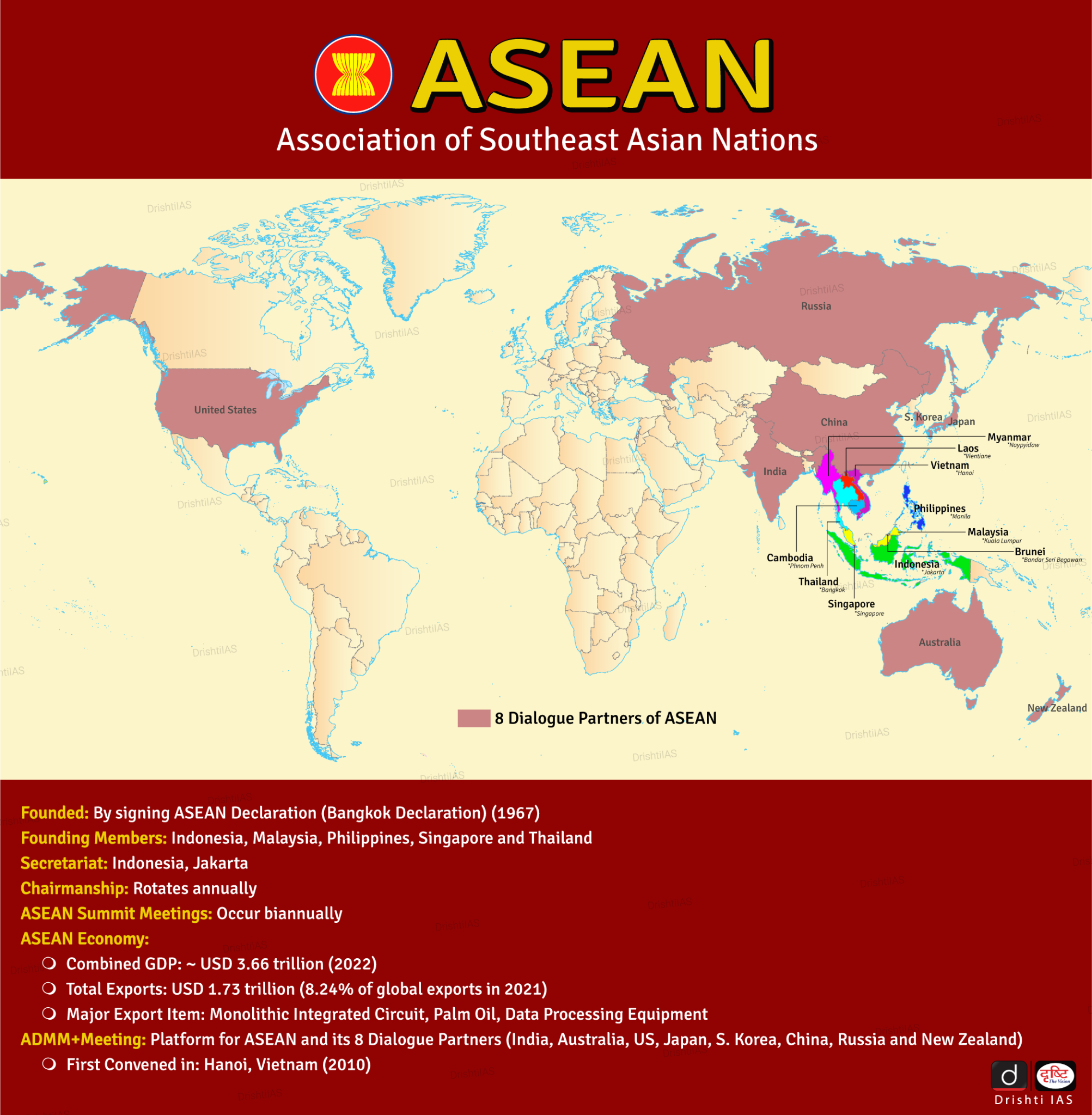Uttar Pradesh Switch to Hindi
Lucknow Invited to ASEAN Forum as Knowledge City
Why in News?
Officials of Lucknow Municipal Corporation were invited to attend the meeting of ASEAN Governors & Mayors Forum (AGMF) in Kuala Lumpur as a 'Knowledge City', after gaining recognition for its initiatives in cleanliness, green development, and sustainable urban management.
Key Points
- About: The AGMF, originally the ASEAN Mayors Forum (AMF) in 2011, was founded to highlight local contributions to ASEAN integration.
- In 2018, AMF was accredited as an entity associated with ASEAN, due to ASEAN member states' official recognition of its common goals and contribution to ASEAN’s community building.
- Participants: The AGMF is being held from 10th August 2025 to 15th August 2025, bringing together governors, mayors, urban experts from Asia, and international organizations such as the German Corporation for International Cooperation (GIZ), United Cities and Local Governments Asia Pacific (UCLG ASPAC), and United Nations Economic and Social Commission for Asia and the Pacific (UNESCAP).
- Objective: The forum aimed to exchange knowledge on proven urban management models, sustainable growth, climate action, and citizen participation.
- Recognition: Lucknow was one of six Indian cities selected to share its experiences in urban management at this prestigious event, marking a significant achievement in its journey towards sustainability and better urban governance.
- Mayor Sushma Kharkwal, Municipal Commissioner Gaurav Kumar, and Additional Commissioner Arvind Kumar Rao presented the city's innovative projects.
- Key projects highlighted during the event included the establishment of the Shivri Solid Waste Processing Plant, along with other initiatives.
Uttar Pradesh Switch to Hindi
Shivaji Memorial in Agra
Why in News?
The Uttar Pradesh government has asserted its plan to construct a memorial dedicated to Chhatrapati Shivaji Maharaj in Agra’s Kothi Meena Bazar, marking a significant step in promoting tourism and cultural unity.
Key Points
- The UP government will fully fund the project, with no external collaboration.
- Construction of the project will be led by the Uttar Pradesh Tourism Development Corporation.
- The government is preparing to begin work on the memorial and museum, with a focus on ensuring cultural and historical accuracy.
Key Monuments in Agra and Their Builders
- Agra was founded by Sultan Sikandar Lodi of the Lodī dynasty in 1504.
- Agra Fort
- Builder: Akbar (initial construction), Shah Jahan (major structures)
- Prominent Buildings:
- Moti Masjid: Built by Shah Jahan
- Diwan-i-Aam (Hall of Public Audience): Built by Shah Jahan
- Diwan-i-Khas (Hall of Private Audience): Built by Shah Jahan
- Jahangiri Mahal: Built by Akbar
- Sheesh Mahal (Turkish Bath): Built by Shah Jahan
- Gardens: Built in Charbagh style, typical of Mughal architecture
- Tomb of Itmad-ud-Daula
- Builder: Noor Jahan (wife of Jahangir)
- Uniqueness: First Mughal structure made entirely of white marble.
- Taj Mahal (UNESCO World Heritage Site)
- Builder: Shah Jahan
- Uniqueness: Finest example of Mughal architecture, built in memory of Mumtaz Mahal (Arzuman Bano Begum). Known for its grandeur and opulence.
Chhatrapati Shivaji Maharaj
- About: Born on 19th February 1630, at Shivneri Fort, Pune was a visionary leader from the Bhonsle clan and the founder of the Maratha Empire, known for resisting the Mughal Empire and striving for self-rule.
- Major Battles: Battle of Pratapgad, Battle of Pavan Khind, Sacking of Surat, Battle of Purandar, Battle of Sinhagad, and Battle of Sangamner.
- The Wagh nakh, was used by Shivaji to kill Afzal Khan in the 1659 Battle of Pratapgad.
- Titles: Chhatrapati, Shakakarta, Kshatriya Kulavantas, and Haindava Dharmodhhaarak.
- Administration: Centralized administration with the Ashtapradhan (Council of Eight Ministers), abolished the Jagirdari System, implemented the Ryotwari System, and built a strong naval force for coastal defense.
- Shivaji is renowned for his innovative guerrilla warfare tactics, which influenced subsequent rulers and shaped the Maratha Military Landscapes.





 PCS Parikshan
PCS Parikshan


